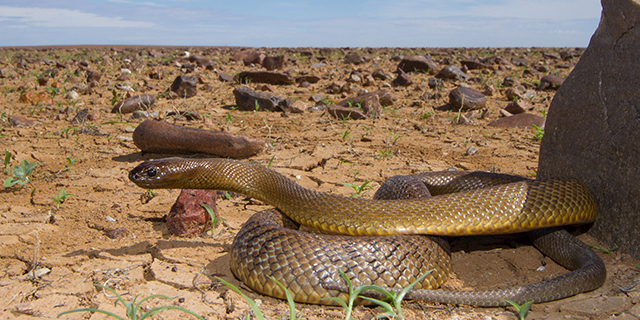Introduction
When it comes to the remarkable world of serpents, few types capture the imagination fairly like the baby tiger serpent. Recognized for their unique coloration and potent poison, these snakes are an essential part of Australia's special community. In this comprehensive article, we will certainly delve into different aspects of infant tiger snakes, including their actions, habitat, and how to safely communicate with them. Whether you're a wildlife lover or merely curious about Risk Factors these animals, understanding infant tiger snakes can aid promote a much deeper gratitude for nature.
Baby Tiger Snakes: What You Required to Learn About Their Behavior and Habitat
What Are Infant Tiger Snakes?
Baby tiger serpents are adolescent types of the very poisonous varieties understood medically as Notechis scutatus These serpents are mainly located in seaside regions of Australia, specifically in Tasmania and southerly Victoria. As they expand, their pigmentation adjustments from a much more soft scheme to the characteristic yellow and black bands that provide their name.
One remarkable aspect of child tiger serpents is their dimension; hatchlings typically determine around 25-30 centimeters in length. Despite their small stature, they have a surprising quantity of venom that can be damaging to human beings if bitten.
Physical Characteristics
Tiger snakes have a number of vital physical traits:
- Coloration: The unique banding pattern commonly ends up being extra pronounced as they mature. Size: Grownups can reach lengths of up to 2 meters. Body Shape: They have a durable body that aids in swimming and earthbound movement.
Where Do Infant Tiger Snakes Live? Recognizing Their Habitat
Understanding the habitat choices of child tiger serpents is important for both conservation tiger snake bite initiatives and public safety. These serpents thrive in numerous settings:
- Wetlands: Marshes and swamps offer ample searching grounds. Coastal Regions: Commonly located near coastlines where they can quest for prey. Woodlands: Dense plant life provides cover from predators.
Geographical Distribution
Tiger snakes are mostly found along Australia's southern shoreline, consisting of:
- Tasmania: Home to one of the most well-known populations. Victoria: Specifically in areas near water bodies.
Are Tiger Snakes Venomous? A Deep Study Their Venom
One usual question develops when talking about child tiger serpents: "Are tiger serpents poisonous?" The answer is a resounding yes!

Venom Composition
The poison of tiger serpents consists of neurotoxins that can cause paralysis, coagulopathy (blood clot problems), and potentially fatality if untreated. Here's what you need to recognize:
- Effects on Humans: A bite from a tiger serpent can bring about symptoms like swelling, discomfort at the bite site, queasiness, and even respiratory failure.
Comparison with Other Poisonous Snakes
In contrast to other Australian serpents such as the eastern brownish serpent or king brown snake, tiger serpent venom is considered amongst one of the most potent. However, deaths are rare because of enhanced medical treatments and access to antivenom.
Behavioral Patterns of Baby Tiger Snakes
Understanding exactly how baby tiger snakes act is essential for those that reside in or go to areas where these reptiles are prevalent.

Nocturnal Habits
Most baby tiger serpents exhibit nocturnal actions. They tend to forage for food throughout cooler evening temperatures. This flexibility helps them prevent killers while boosting their hunting efficiency.
Hunting Techniques
Their searching methods include:
- Ambush Predation: Waiting stationary till target comes close. Active Foraging: Actively relocating with vegetation or along rivers in search of food.
First Aid for Snake Bites: What You Ought to Know
Despite being fascinating animals, experiences with infant tiger snakes can Behavior of venomous snakes bring about hazardous situations if bites take place. Recognizing first aid treatments can conserve lives.
Immediate Steps After a Bite
Remain calmness; panic boosts heart rate. Immobilize the impacted limb utilizing a splint or bandage. Seek immediate clinical focus-- antivenom may be necessary.Creating a Snake Bite Emergency Treatment Kit
A well-prepared emergency treatment kit must consist of:
|Product|Function|| ------------------------------|--------------------------------------|| Compression plaster|To debilitate the limb|| Splint|Stabilizes broken bones or joints|| Antihistamines|Relieves allergies|| Emergency situation contact numbers|Quick accessibility throughout emergency situations|
Common Misconceptions Regarding Tiger Snakes Debunked
Many myths surround these appealing reptiles; allow's clear up some false impressions frequently held by people.
Myth # 1: All Tiger Snakes Are Aggressive
While some people might display defensive behaviors when intimidated, not all tiger snakes display screen aggressiveness in the direction of humans unless provoked.
Myth # 2: Infant Tiger Snakes Are Less Harmful Than Adults
This misconception might not be additionally from the truth! Child tiger snakes contain virtually as much poison as grownups relative to their dimension; therefore they pose substantial dangers if bitten.
FAQs Regarding Child Tiger Snakes
What do baby tiger snakes eat?- They mostly take in small animals, birds, frogs, and fish.
- Look for slender bodies with pale banding patterns that end up being more noticable as they mature.
- Yes! Birds of target and larger reptiles may target them.
- Typically every couple of weeks as they proliferate throughout their early life stages.
- While some individuals do keep them illegally without licenses as a result of their harmful nature; it's typically not suggested provided their poisonous status.
- With prompt medical treatment-- consisting of antivenom-- the survival rate is high!
Conclusion
In recap, recognizing baby tiger snakes-- what they consume, where they live, exactly how they behave-- can equip us with useful knowledge regarding these remarkable yet harmful animals. The relevance of education and learning bordering first aid measures can not be overstated; recognizing just how to react properly after a bite could save lives while promoting respect for our wriggling next-door neighbors within Australia's abundant biodiversity spectrum.

By valuing these serpents' roles within ecological communities-- and identifying prospective risks-- we promote conjunction rather than fear-based responses towards one another's existence in nature's grand tapestry! Whether you're an avid hiker considering your following journey or just interested about local wildlife experiences near home-- this guide serves as your trusted referral factor on the enigmatic world populated by our friends-- the stunning baby tiger snake!